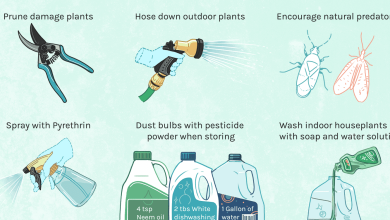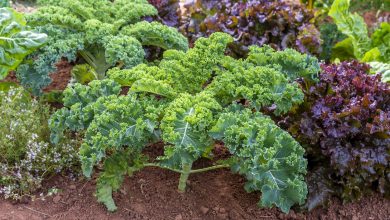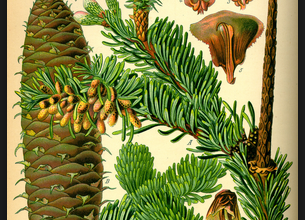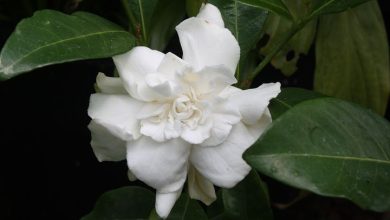Sowing Broccoli: [Care, Cultivation, Irrigation, Substrate and Pests]
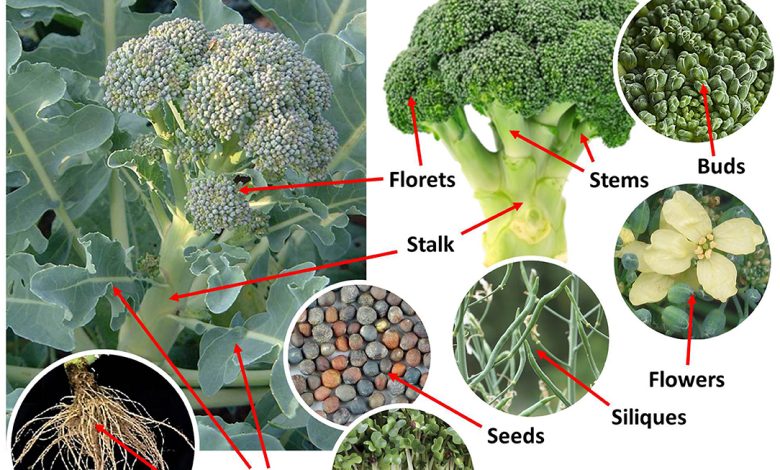
B roccoli, like garlic , has aboutAMAZING health benefits.
You should include it in your diet. Really.
And also, make sure you eat them free of INSECTICIDES or other CHEMICALS. Which is easy to do if you include them in your planting calendar for your urban or home garden.
So… How do I do it? Planting your own broccoli.Totally ecological.
And here’s the best: you’ve come to the right place to learn how to do it.
Important points when planting broccoli:
- When? Any time of the year. However, it prefers warm or low temperatures, so it is ideal in autumn or late winter.
- Collection time? 60 days, depending on the variety.

- Where? It needs sunlight, but also shade (especially in summer). At first it is preferable that it does not receive direct light.
- How do I prepare the land? Ideal pH between 6 and 7 (neutral). Very moist soil with good drainage.
- How do we pay? Organic matter, sawdust substrate. Decomposed manure.
- How do we water? Ideal drip.
- How often do we water? It requires constant humidity. In summer daily (about 30min depending on the heat). The rest of the year we can space up to every 3-4 days depending on the rains.
- How do we plant it? Pot with 50 cm depth with holes. Ideal directly on the ground, 2 cm deep. Leaving about 15 cm of separation betweenplanted seeds.
- How do we harvest? Pruning shears or sharp knife, cut diagonally across the broccoli bush.
- What diseases do you have? Whitefly, aphid, caterpillar, allerquin bugs,and cabbage worms.
- Good associations? Potato, onions, carrot, cucumber, beetroot, lentils, oregano. Mint and rosemary to ward off pests.
- Associations not recommended? Tomato, leek, strawberry, pepper and mustard.
B roccoli is a type of cabbage and one of the vegetables withhigher nutritional value. It contains a high content of vitamin C, as well as a great diversity of nutrients, all of them with anti-cancer properties.
Likewise, it can be an excellent aid to prevent and improve other conditions, such as high blood pressure, vision problems and some infections.
Because of its large amount of nutrients — folic acid, beta carotene, iron, potassium and vitamin E, to name just a few — experts recommend including it in your weekly diet.
In addition, it is rich in fiber, which helps improve digestion and its caloric value is considerably low, just 35 kcal per 100 grams.
For this and much more, it is considered one of the most important vegetables for humans.
Did you know…Half a kilo of broccoli has the same calories as 28 grams of butter.
Broccoli Characteristics
 Broccoli is one of the easiest brassica (Brassicaceae, also called cruciferous) varieties to grow.
Broccoli is one of the easiest brassica (Brassicaceae, also called cruciferous) varieties to grow.
Other varieties of the same species are cauliflower, cabbage, and Brussels sprouts.
However, of all of them, broccoli is the one that requires the least care during its sowing, in addition to the fact that it has the peculiarity of producing two crops per year; one in autumn and one in summer.
It is a green plant, with abundant and fleshy flower heads, arranged in the form of a tree, which arise from a thick stem.
The plant can reach a height of 90 cm and is edible if harvested before flowering. Otherwise, their nutrients are lost and the flower heads turn bright yellow.
Broccoli is native to the temperate countries of the Mediterranean and Asia Minor.
From there, it reaches the Italian Peninsula, where it is cultivated for consumption and becomes very popular. But it is not until the end of the 19th century that its production spread throughout Europe.
Broccoli varieties
Some of the most common broccoli varieties are:
Types of Broccoli:
- Calabrian broccoli, named after the region it comes from, in Italy. It has large heads and thick stems. It is a cool season annual crop.
- Broccoli sprouts, which feature a larger number of heads, with many thin stems.
- Purple broccoli, this variety is quite common in southern Italy, Spain, and in the UK. It has a cauliflower-shaped head, but it is made up of tiny flower buds, each of which has a purple hue at the tip.
- Romanesco, this variety features asymmetrical swirling inflorescence and requires quite a bit of space to grow.
- Raab broccoli, its flavor is stronger and more concentrated, largely due to its immature inflorescence.
It thrives best in cool to cold climates where lows are 15°C and highs are 20°C.
And although its cultivation is relatively simple, it requires certain conditions that are important to consider in order to achieve a good harvest.
To find out more, read: Varieties of broccoli.
Necessary conditions for growing broccoli
To grow broccoli effectively, the following factors must be considered:
The weather
 As we have already mentioned, broccoli is a plant of cool to cold climates, so if you live in a warm climate, it may be convenient for you to sow the shoots in autumn, this to prevent the inflorescence from coinciding with very hot times or with great frosts.
As we have already mentioned, broccoli is a plant of cool to cold climates, so if you live in a warm climate, it may be convenient for you to sow the shoots in autumn, this to prevent the inflorescence from coinciding with very hot times or with great frosts.
Broccoli can germinate even at temperatures as low as 4°C.
Large – headed broccoli varieties do not grow in hot climates due to insect infestation.
In contrast, the sprout variety is more resistant, although it can also be affected by certain pests such as caterpillars and whiteflies.
Weather Tips
Keep in mind that if you live in a warm climate, it’s best to plant your broccoli sprouts in the fall. Varieties such as:
- Calabrian broccoli.
- From Cicco.
- Purple broccoli.
The shoots are best suited to moderately temperate climates, so either variety does well in the fall.
Its shoots are leafy in appearance and have tiny heads. They take between 65 and 90 days to mature. They can also be sown in spring.
Did you know…Its characteristic and intense smell is due to the fact that it is rich in sulfur nutrients.
If you are interested in growing purple broccoli, consider that this variety germinates best if planted in spring, just after the last frost.
Now, if you live in a cold climate and want to grow broccoli quickly, you can grow any variety of Broccoli Raab:
- Rapini.
- Sorrento.
- Zamboni.
 This variety requires a shorter maturation time: between 40 and 55 days if planted in spring, and between 50 and 75 days if planted in autumn.
This variety requires a shorter maturation time: between 40 and 55 days if planted in spring, and between 50 and 75 days if planted in autumn.
If you plan to plant in warm outdoors, try to keep the soil cool. You can make use of compost bins, as well as leaves and bark to achieve this.
On the other hand, if the climate is temperate to cold, you can place a plastic cover to keep the soil at a good temperature.
Important:Remember that broccoli prefers direct sun when it has grown, however, when the plant is still small, it prefers shade. For this reason, it is advisable to find a well-lit area of the garden and, as far as possible, with moderate shade.
Broccoli Irrigation
To plant broccoli effectively, constant soil moisture is required, so regular and abundant watering must be ensured, but without flooding the soil.
Broccoli likes soil that is very wet, but with good drainage.
Recommendations regarding irrigation
 Water your plants regularly, but be sure not to get the growing heads wet when you do this, as this can lead to mold.
Water your plants regularly, but be sure not to get the growing heads wet when you do this, as this can lead to mold.
The ideal, in those cases, will be to install a drip irrigation system.
If weather conditions are hot or very dry, you can increase the amount of water.Before planting, make sure the soil is not only fertile but also well drained.
If your garden is prone to flooding, you can build a planter box to raise the soil above ground level. We also explain this in how to organize your garden.
Substratum
Finally, the effective cultivation of broccoli requires soft and well-fertilized soils, fresh and with regular humidity.
It is important to consider that broccoli adapts better to neutral soils and does not support limestone soils.
A substrate that allows moisture retention is recommended, but at the same time facilitates good drainage of the soil to avoid puddles.
To achieve this, sawdust or small stones can be added to the substrate to give it good drainage.
To keep the soil well nourished, a good amount of compost is recommended, especially with the first shoots.
Did you know…The heaviest recorded broccoli was grown in England in 1964. It weighed 30 pounds!
Fertilizer Recommendations
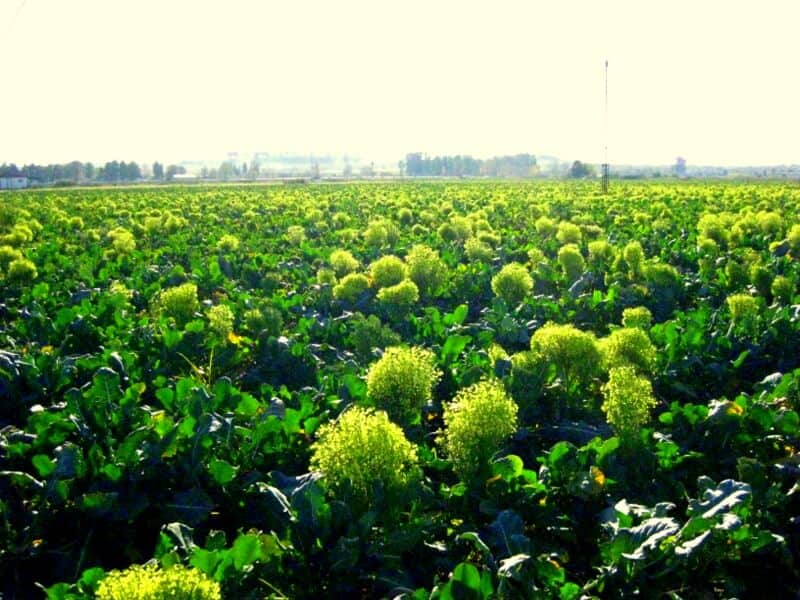 Mulching should be maintained throughout the growing process, as it helps regulate temperature and humidity.
Mulching should be maintained throughout the growing process, as it helps regulate temperature and humidity.
Being a plant with vertical stems and shallow roots, it can be planted in a pot or in direct soil.
The pot should be at least 50cm deep, with enough holes to facilitate drainage. Similarly, the wider the better, since broccoli grows in the form of a bush and its highest part is larger.
Planting in direct soil is, however, the most recommended option due to space. Keep in mind that there are some varieties that require a lot of space to grow.
In general, the recommended distance between each plant is between 40 and 60cm apart.
If you have a lot of room to grow, you can choose a variety with a large head, such as:
- Arcadia
- belstar
- munchkins
These varieties are the most common and take 50-70 days to mature if planted in the spring, and 65-90 days to mature if planted in the fall.
Seeds
Broccoli seeds are round, dark red or gray in color. They have an approximate diameter of 1 mm.
They are very easy to get. To make sure they are in good condition, check that there are no stains on their surface.
pH
Check the pH of the soil. If the level is less than 6.0 you will need to add an acidic compound. If it’s above 7.0, add granular sulfide.
Where to grow broccoli?
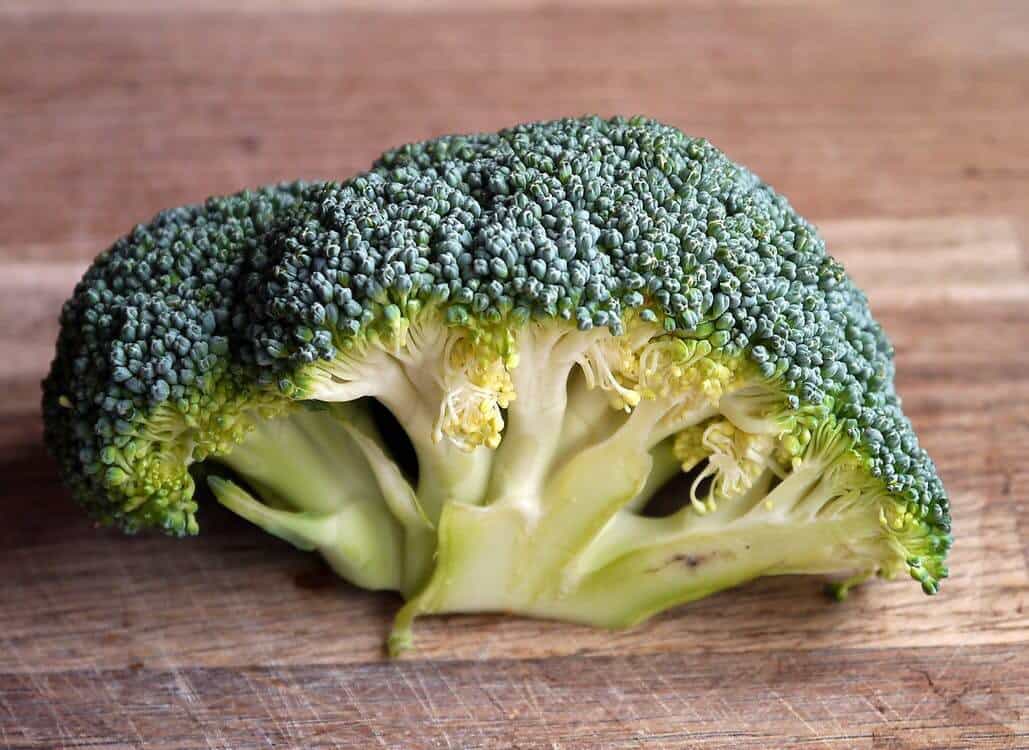 Preferably outdoors. With direct sun and moderate shade.
Preferably outdoors. With direct sun and moderate shade.
When the shoots do not yet reach 10cm in height, it is necessary to protect them from direct light.
If you plan to plant in warm exteriors, try to keep the soil always fresh. If the weather is rather cold, you can put a plastic cover to keep the soil at a good temperature.
If you plant in a pot, make sure it is at least 50cm deep and has a good number of holes for easy water drainage. Also, the wider the better. Keep it in a sunny room.
To plant your seeds in a pot, you must follow the same steps as for planting them outside.
How do we prepare the land? The Nutrients You Need
Broccoli is very picky when it comes to nutrients, specifically potassium and nitrogen.
Two tricks to grow Broccoli:
- To increase the amounts of potassium in the soil, we recommend boiling a banana peel. Let the water cool and then pour it in the area where you want to plant the broccoli and where you already have it planted.
- As for nitrogen, using leftover legumes or planting them alongside, such as peas or green beans, is supposed to be an excellent natural fertilizer.
In addition to requiring a large amount of nutrients, it is also necessary that the soil has a neutral pH, between 6.0 to 7.0.
Some recommendations on nutrients
 It is recommended that you make sure to measure the pH of the soil and add the necessary organic matter to adjust its acidity. You should measure the soil periodically throughout the growing process.
It is recommended that you make sure to measure the pH of the soil and add the necessary organic matter to adjust its acidity. You should measure the soil periodically throughout the growing process.
Remember that if the pH level is below 6.0, you will need to add an acidic compound. Conversely, if you find that the pH of your soil is above 7.0, mix in granular sulfur.
If you consider that the land does not have the necessary conditions or is poor in quality, you can mix it with mature compost.
Trick:Also, organic fertilizers like alfalfa, cottonseed meal, and manure are quite effective for planting broccoli.
If you prefer, you can also transplant your sprouts to grow broccoli in more controlled conditions.
If you have excellent quality land, you may be interested in planting a romanesca variety.
Because of their spiral shape, the romanescas give a pleasant aesthetic to the garden, in addition to being very crunchy when eaten. This variety requires temperatures around 26 ºC and plenty of water.
They generally take 75-90 days to mature if planted in the spring, and 85-100 days if planted in the fall.
Some varieties of romanesca are:
- Natalino.
- Italian Romanesque.
- Veronica.
When to plant broccoli?
Broccoli takes approximately 60 days to produce, although certain varieties such as Romanesca require a little more time.
For a summer harvest, plant two to three weeks before the last spring frost.
For a fall crop, sow the seeds 85 to 100 days before the first fall frost.
What is the planting process?
Here we show you how to grow broccoli in your urban or home garden.
You can sow at any time of the year as it withstands temperatures of -5°C, just make sure that the flowering time does not coincide with intense frosts or very hot months.
The minimum planting depth is three times the size of the seed. It is recommended to plant it outdoors about 2cm deep.
Make holes of that size, in rows 15cm apart. Place a few seeds in each hole and cover them with soil.
After covering the seeds, flatten the soil well (being careful not to touch the seeds) and water with plenty of water.
How and how much do we water?
Irrigation must be constant, but it is necessary to ensure that the water drains easily and that puddles do not occur.
Give them between 2 and 4cm of water per week.
Avoid watering the leaves as pests can be generated by excess water. To avoid this, you can install a drip irrigation system.
At least once a week is when you should perform a pest appearance inspection.
An automator together with drip irrigation is usually the ideal option. Since it will take care of keeping the soil moist daily without flooding it.
Other considerations for your broccoli crop
 Fertilize your plants about three weeks after planting them.
Fertilize your plants about three weeks after planting them.
Remember that the mulch must be maintained throughout the life of the plant.
When your outer shoots reach a height of 2.5cm you need to «clear» the space around them to allow them to grow. Remove any other plants to clear the rows.
To guarantee a good growth, it is necessary to carry out a fertilization at the beginning of the shoots.
Select the healthiest looking plants. When the plants reach between 10 and 15cm they are transplanted outdoors forming rows, 60 centimeters apart.
The depth of the hole should be enough to cover even the first true leaves. It is recommended to dig holes about 7.5cm deep. Miniature varieties can be planted just 30cm apart.
It is advisable to enhance the plants, adding soil to the base of the stem, to prevent them from falling over. In this sense, the earth must reach the first leaves, but without covering them.
Be careful not to break the roots by accident. Broccoli plants have very shallow roots, so it’s easy to break them when moving the soil.
Sometimes, when transplanting them, you will find that some have very twisted roots. If so, then you should spread them out very carefully and cut them back a bit to encourage their growth.
Moisten the soil with a thorough watering after transplanting.
You can continue to fertilize the plants about twice a week until they are ready for harvest.
When can we harvest broccoli?
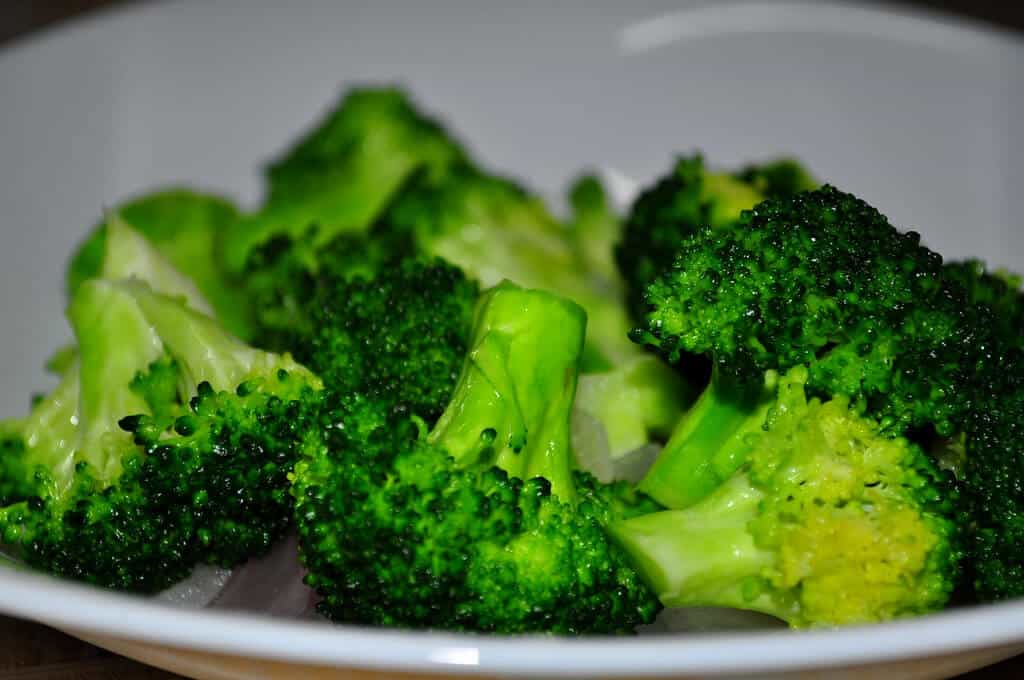 At about 60 days, the broccoli will be ready to harvest.
At about 60 days, the broccoli will be ready to harvest.
You will notice that the tree shape is already quite evident and that the buds are tightly closed and very dark green in color, and feel stiff to the touch.
Do not wait for the shoots to become lighter and light green or yellow flowers begin to grow on them, as this means that the product is losing its nutritional properties.
For its collection, take the pruning shears or a very sharp knife and make a diagonal cut, while holding the plant firmly so as not to hurt it.
It is recommended to do it at an angle so that the plant keeps the water inside.
The cut should be just where the bud joins the stem of the plant. Especially avoid breaking heads. A clean, well-executed cut will help encourage new growth.
After harvesting the central head, it is covered with a little homemade organic matter such as compost to favor the formation of more shoots

